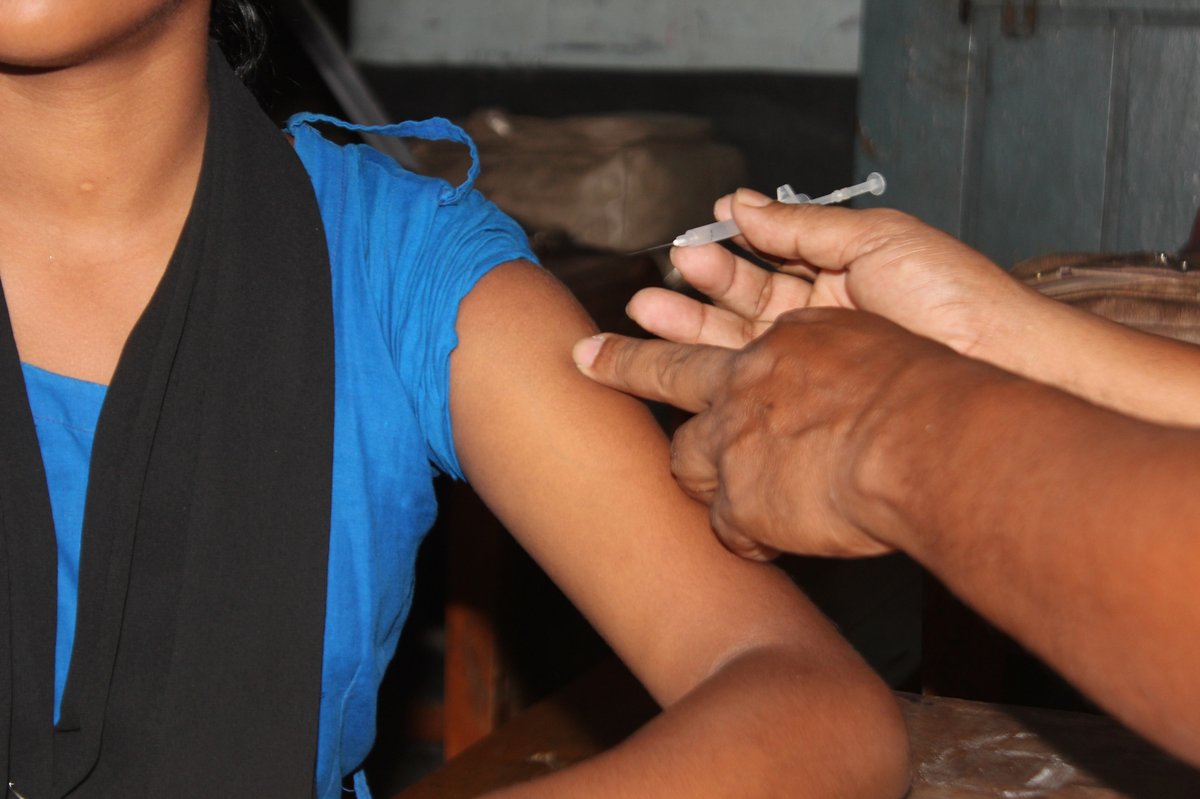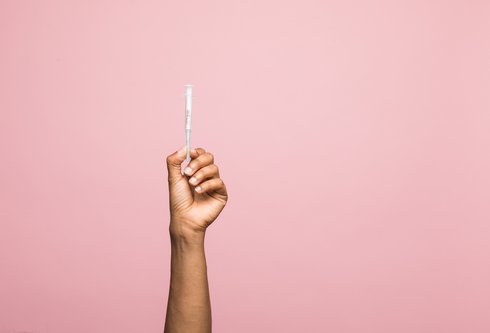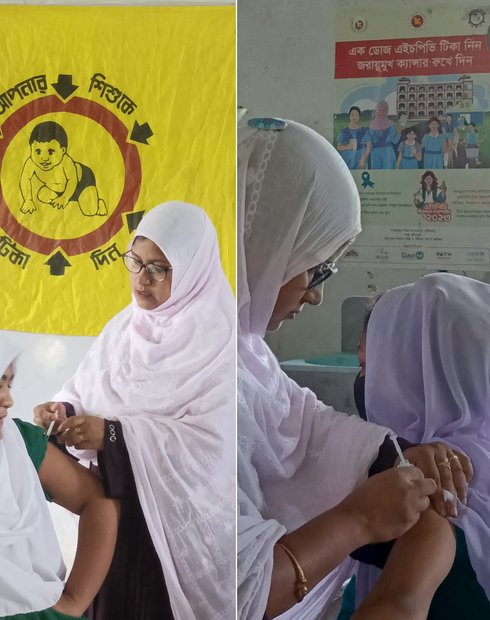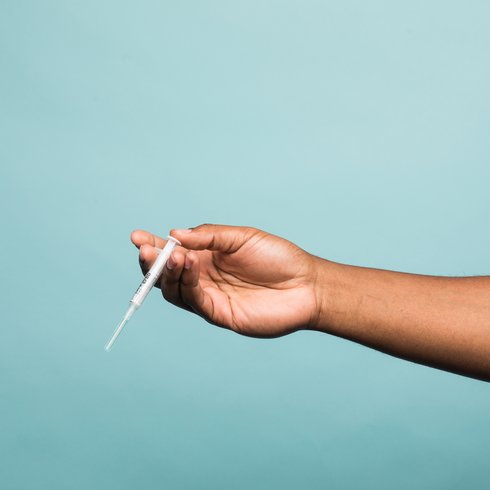Cervical cancer is the fourth most common cancer among women globally, with more than 95 percent of cases resulting from human papillomavirus (HPV) infection. HPV vaccines are highly effective; since their introduction, they have significantly reduced the incidence of HPV infections and precancerous cervical lesions. But although they have been available since 2006, HPV vaccines remain out of reach for many girls and women in low- and middle-income countries (LMICs)—where about 94 percent of cervical cancer deaths globally occur.
Improving vaccine access isn’t a simple matter, though; historically, countries face affordability challenges, competing health priorities, global supply constraints, uncertain programmatic feasibility, and more. Advancing HPV vaccine availability in LMICs and ensuring sustainable access requires work on many fronts, from introducing new vaccines to reconsidering existing vaccination programs to developing new tools for decision-making. Such expansive work necessitates expansive expertise—and a track record of success.
That’s where PATH comes in.
Our team of experts works across the vaccine development and delivery spectrum, driving clinical advancements, policy and programmatic innovation, and improved vaccine uptake. We work hand-in-hand with partners across institutions and sectors to knock down barriers to access and ensure everyone’s right to lifesaving vaccines—no matter where they live.
PATH’s HPV Vaccine Safety, Immunogenicity, and Health Economics (HPV SIHE) project, designed to increase global HPV vaccine availability, inform policy decisions, and help overcome LMICs' most common barriers to access is a prime example of how our results-driven, cross-cutting work can lead to real change.
Advancing vaccine access
When the project began in 2020, there were only three World Health Organization (WHO) prequalified HPV vaccines available, all of which are manufactured by large, multinational vaccine developers and can be expensive for LMICs to procure—especially for the middle-income countries that aren’t eligible for support from Gavi, the Vaccine Alliance.
The world needed additional, affordable HPV vaccines if it were to make progress toward reaching global HPV immunization goals—in particular, the WHO’s Global Strategy to Accelerate the Elimination of Cervical Cancer, which calls on countries to, by the year 2030, fully vaccinate 90 percent of girls with HPV vaccine by age 15.
We found a way forward in a vaccine in China. In 2019, Xiamen Innovax Biotech Co. Ltd. licensed Cecolin®, an affordable bivalent HPV vaccine that protects against the two most common types of HPV that cause cervical cancer, for use in China—and they were interested in bringing it to the global market. PATH’s chemistry, manufacturing, and controls experts were already supporting Innovax in preparing Cecolin for WHO prequalification but the world needed supplemental information that would demonstrate Cecolin’s effectiveness in populations outside of China and build a broader evidence base for use in LMICs.
With funding from the Gates Foundation and the Federal Ministry of Research, Technology, and Space in Germany via KfW Development Bank, PATH designed and sponsored a Phase 3 clinical trial of Cecolin in Bangladesh and Ghana to evaluate extended and alternative dosing schedules, which could allow countries flexibility in how to vaccinate their populations. We chose Bangladesh and Ghana because, at the time the trial began, neither country had HPV immunization programs in place but both were actively considering them due to suffering high burdens of HPV infection and cervical cancer death, and the generation of clinical data in their countries would likely support decision-making.
The trial ran between 2021 and 2023 and examined how Cecolin performed compared to Gardasil® (which has been available since 2006 and is the most commonly used HPV vaccine in LMICs) in 9-to-14-year-old girls in various dosing schedules. We worked closely with the local investigators that conducted the trial, providing administrative oversight, scientific guidance, and operational support throughout.
And it was a huge success. Results showed that Cecolin was well tolerated, highly immunogenic in extended and alternative dosing schedules, and generated immune responses comparable to Gardasil. But more than that, it demonstrated that a single dose of Cecolin was able elicit an immune response comparable to a single dose of Gardasil, which had already demonstrated single-dose effectiveness in previous studies.
This was significant because in 2022, WHO updated its HPV vaccine recommendations and endorsed a single-dose schedule, which expands access to HPV vaccination by reaching more girls and reducing financial and logistical barriers. Cecolin was already poised to be a valuable asset in the global HPV prevention toolkit, but if it could be administered as a single dose, its impact would be far more significant.
We presented this data to WHO. Based on the results of the PATH-sponsored study, in October 2024, WHO revised its Considerations for HPV Vaccine Product Choice document and added Cecolin to the list of HPV vaccines that can be administered on a single-dose schedule.
“This was a significant success, and a celebratory moment for global HPV prevention,” said Niranjan Bhat, PATH Senior Medical Officer and HPV SIHE project leader. “Cecolin, prequalified in 2021 with PATH support, now comes with a single-dose endorsement and strong evidence for its use in LMICs. Together, PATH and our partners paved the way toward better HPV vaccine access in LMICs by increasing the availability of affordable vaccine options, chipping away at supply constraints, informing policy around HPV vaccination, and overcoming logistical challenges—everything we set out to do and more.”
“(We) ... increas(ed) the availability of affordable vaccine options, chipp(ed) away at supply constraints, inform(ed) policy around HPV vaccination, and over(came) logistical challenges—everything we set out to do and more.”— Niranjan Bhat, PATH Senior Medical Officer and HPV SIHE project leader
Improving decision-making
Introducing new HPV vaccines to the global market is essential for improving access, but with multiple options on the market, how can countries determine which are right for their populations? Or if they can afford HPV vaccine at all? Vaccines are one of the best buys in public health but deciding to introduce them is a lot more complex than simply saying ‘yes’ to every new vaccine or policy change that comes along.
That’s where PATH’s health economics team comes in.
“Our experts conduct research, lead studies, and develop tools that can help country leaders and policy makers answer questions about vaccine costs and affordability,” said Clint Pecenka, PhD, PATH’s Director of Health Economics. “The HPV SIHE project included a robust portfolio of health economic activities, largely focused on supporting countries in examining the cost and health implications of HPV vaccination programs and product choices—data on which is relatively limited in LMICs and functions as a barrier to vaccine introduction and sustainable access.”
For instance, while the Phase 3 study of Cecolin was ongoing in Bangladesh and Ghana, we supported and helped conduct a series of country-led HPV vaccine impact and cost-effectiveness analyses (CEAs) in LMICs that would help local leaders estimate long-term health, economic, and financial impacts and decide which vaccine products and schedules would be most appropriate and sustainable.
Vaccine CEAs examine the costs and health impact of one or more vaccines by comparing them to each other and to a scenario without vaccination to determine whether a vaccine is a good use of resources. They weigh different pieces of information, such as disease burden, vaccine efficacy and impact, delivery costs, and illness costs, when making a determination.
We supported studies in the Philippines, Mozambique, Kenya, Burkina Faso, and Jordan (results forthcoming). In all cases, HPV vaccine was cost effective when compared to no vaccination. In some cases, it was even cost saving, depending on the vaccine product chosen. These studies provide crucial information for country decision-makers and, while results are specific to the country studied, they could help guide countries in similar geographic regions or with similar disease burdens or economic conditions.
In addition to managing the CEAs, PATH’s health economists developed the HPV Vaccine Cost Calculator, which assesses and compares vaccination program costs annually and for a period of 10 years for the HPV vaccine options currently available in the global market. Any country can use it, including those eligible for Gavi pricing. Importantly, it can provide high-level estimates of what a single-dose vaccination program would cost, for countries that are interested in switching from a two-dose schedule. Like the CEAs, the cost calculator could provide costing information to countries deciding whether to implement or change an HPV vaccination program.
But that wasn’t all—economic analyses can also play a role in assessing other cervical cancer prevention methods. To that end, our experts evaluated health system barriers and opportunities for cervical cancer prevention in Zambia, and conducted the first-ever study of the cost of cervical cancer and precancer screening and treatment in Senegal. These studies broaden country decision-makers’ understanding of the costs associated with preventing and treating cervical cancer and are yet another example of how PATH is working to stamp out HPV infection worldwide.
Looking forward
The world still has a long way to go in defeating cervical cancer, but the successes of PATH’s HPV SIHE project bring us one step closer. Since the program began in 2020, more countries have data demonstrating the cost-effectiveness of HPV vaccination programs; more decision-makers have access to tools that can help them explore different vaccination options and scenarios; more HPV vaccines are available on the global market, with robust data available to support use; and more HPV vaccines are recommended for single-dose administration.
“PATH is proud to have conducted this crucial work and to have played a role in advancing HPV vaccination worldwide,” said Anne Schuind, MD, HPV Vaccines Initiative Lead at PATH. “Vaccination shouldn’t be a privilege of wealth, and we are committed to making sure all girls are protected from HPV.”
Importantly, our work doesn’t end here. The HPV SIHE program was only one entry in a deep portfolio of work that runs the gamut from vaccine research to introduction to policy guidance. Together with our partners, we can advance the global goal to eliminate cervical cancer and save hundreds of thousands of lives every year.



